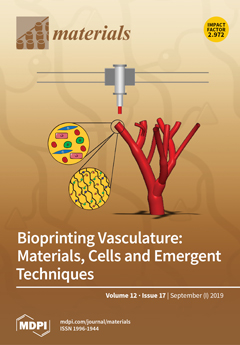TiO
2 thin films are used extensively for a broad range of applications including environmental remediation, self-cleaning technologies (windows, building exteriors, and textiles), water splitting, antibacterial, and biomedical surfaces. While a broad range of methods such as wet-chemical synthesis techniques, chemical vapor deposition
[...] Read more.
TiO
2 thin films are used extensively for a broad range of applications including environmental remediation, self-cleaning technologies (windows, building exteriors, and textiles), water splitting, antibacterial, and biomedical surfaces. While a broad range of methods such as wet-chemical synthesis techniques, chemical vapor deposition (CVD), and physical vapor deposition (PVD) have been developed for preparation of TiO
2 thin films, PVD techniques allow a good control of the homogeneity and thickness as well as provide a good film adhesion. On the other hand, the choice of the PVD technique enormously influences the photocatalytic performance of the TiO
2 layer to be deposited. Three important parameters play an important role on the photocatalytic performance of TiO
2 thin films: first, the different pathways in crystallization (nucleation and growth); second, anatase/rutile formation; and third, surface area at the interface to the reactants. This study aims to provide a review regarding some strategies developed by our research group in recent years to improve the photocatalytic performance of TiO
2 thin films. An innovative approach, which uses thermally induced nanocrack networks as an effective tool to enhance the photocatalytic performance of sputter deposited TiO
2 thin films, is presented. Plasmonic and non-plasmonic enhancement of photocatalytic performance by decorating TiO
2 thin films with metallic nanostructures are also briefly discussed by case studies. In addition to remediation applications, a new approach, which utilizes highly active photocatalytic TiO
2 thin film for micro- and nanostructuring, is also presented.
Full article






